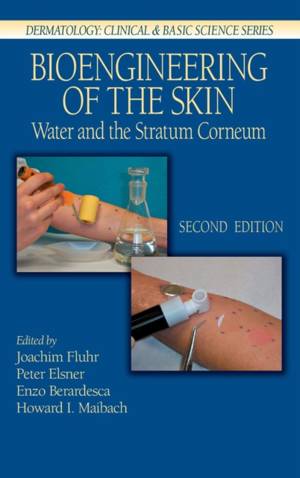
- Afhalen na 1 uur in een winkel met voorraad
- Gratis thuislevering in België vanaf € 30
- Ruim aanbod met 7 miljoen producten
- Afhalen na 1 uur in een winkel met voorraad
- Gratis thuislevering in België vanaf € 30
- Ruim aanbod met 7 miljoen producten
Zoeken
Bioengineering of the Skin
Water and the Stratum Corneum, 2nd Edition
€ 427,45
+ 854 punten
Omschrijving
Bioengineering of the skin, or more precisely the biophysical assessment of skin physiology, is moving rapidly from a descriptive approach to a deeper understanding of biophysical and biochemical processes. This second edition of the popular text Bioengineering of the Skin: Water and Stratum Corneum reflects the progress in the field, focusing on the dramatically improved understanding of skin physiology. Specifically, it reviews the shift in our understanding of the stratum corneum from an inert surrounding sheet to a biologically active compartment. The stratum corneum is the interface between the sometimes harsh environment and the internal turmoil of the human body. Based on a large number of recent publications, this book explains the mechanisms involved in stratum corneum barrier function and hydration. It reflects 10 years of progress not only of the non-invasive biophysical assessment of skin physiology parameter, but also of the perfection of the available devices. It brings all research on epidermal water and transepidermal water loss in health and disease up-to-date with the revision of existing chapters as well as added chapters from new contributors on hydration and itching. This edition also includes new guidelines on the standardization of measurements. Bioengineering of the Skin will enhance communication within the research community and will be useful for scientists in the skin bioengineering field by presenting methods that offer reliable and reproducible approaches for product testing in the pharmaceutical and cosmetic industries, as well as for basic research.
Specificaties
Betrokkenen
- Uitgeverij:
Inhoud
- Aantal bladzijden:
- 440
- Taal:
- Engels
- Reeks:
Eigenschappen
- Productcode (EAN):
- 9780849314438
- Verschijningsdatum:
- 27/08/2004
- Uitvoering:
- Hardcover
- Formaat:
- Genaaid
- Afmetingen:
- 163 mm x 243 mm
- Gewicht:
- 757 g

Alleen bij Standaard Boekhandel
+ 854 punten op je klantenkaart van Standaard Boekhandel
Beoordelingen
We publiceren alleen reviews die voldoen aan de voorwaarden voor reviews. Bekijk onze voorwaarden voor reviews.







